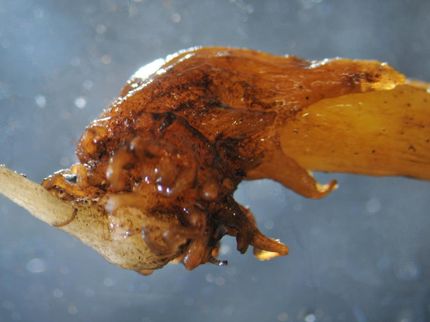Transport proteins suprisingly evolved long before their compounds emerged
As in an arms race plants constantly develop new toxic compounds to protect themselves against herbivores and diseases - and as in war, mobility is important. Therefore, plants evolved transport proteins to efficiently and timely concentrate toxic defense compounds where they are needed the most.
"It's an exciting discovery because it's often assumed that evolution is guided by what gives the organism an advantage. Why then were these transporters maintained during evolution when the compounds they move had not yet emerged?" says Associate Professor Hussam Nour-Eldin.
Discovery spikes international interest
The scientists investigated how transport proteins evolved along with the emergence of new defense compounds. The research goal was to understand how transport proteins acquire the ability to move new toxic compounds - and what comes first in the evolution: the transport protein's ability to move a defense compound or the compound?
First-author Morten Egevang Jørgensen, says the team was surprised to find that proteins with the ability to transport new defense compounds may have evolved before the compounds had even occurred in nature.
Chicken or the egg?
The scientific question is in other words a "the chicken or the egg" challenge. Until now it was generally assumed that toxic compounds have to emerge in nature before the need to transport them arises.
However, as the research shows, transport proteins can emerge long before the compounds have seen daylight.
Jørgensen explains that it might be that the earliest transport proteins are able to move several different toxic compounds (including some that does not yet exist in nature) and only later - when the new toxic compounds have emerged in nature - do the transport proteins emerge that specifically are responsible for transporting the new toxic compounds.
"Now we seek to understand how these transport proteins have been able to survive the natural selection until their compounds emerge," continues Nour-Eldin.
1 billion people may get a non-toxic cassava tuber to eat
The results are not only exciting to those interested by basic research and evolution.
The study has also generated valuable knowledge on how crops containing toxic compounds in edible parts could be made healthier.
During the research, the scientists succeeded in identifying the proteins responsible for transporting the toxic compounds in the cassava plant. Cassava is an essential source of food for up to 1 billion people but the roots contain large amounts of hydrogen cyanide.
"Now that we have identified the transport proteins that are able to move these toxic compounds we may be able to prevent accumulation of them in the edible plant roots," says Professor Barbara Ann Halkier, Head of the DynaMo Center and part of the team, and continues "In the long term, the results may improve food quality".
Original publication
Original publication
Morten Egevang Jørgensen, Deyang Xu, Christoph Crocoll, David Ramírez, Mohammed Saddik Motawia, Carl Erik Olsen, Hussam Hassan Nour-Eldin, Barbara Ann Halkier; "Origin and evolution of transporter substrate specificity within the NPF family"; eLife; 2017
Organizations
Other news from the department science

Get the life science industry in your inbox
By submitting this form you agree that LUMITOS AG will send you the newsletter(s) selected above by email. Your data will not be passed on to third parties. Your data will be stored and processed in accordance with our data protection regulations. LUMITOS may contact you by email for the purpose of advertising or market and opinion surveys. You can revoke your consent at any time without giving reasons to LUMITOS AG, Ernst-Augustin-Str. 2, 12489 Berlin, Germany or by e-mail at revoke@lumitos.com with effect for the future. In addition, each email contains a link to unsubscribe from the corresponding newsletter.






















































